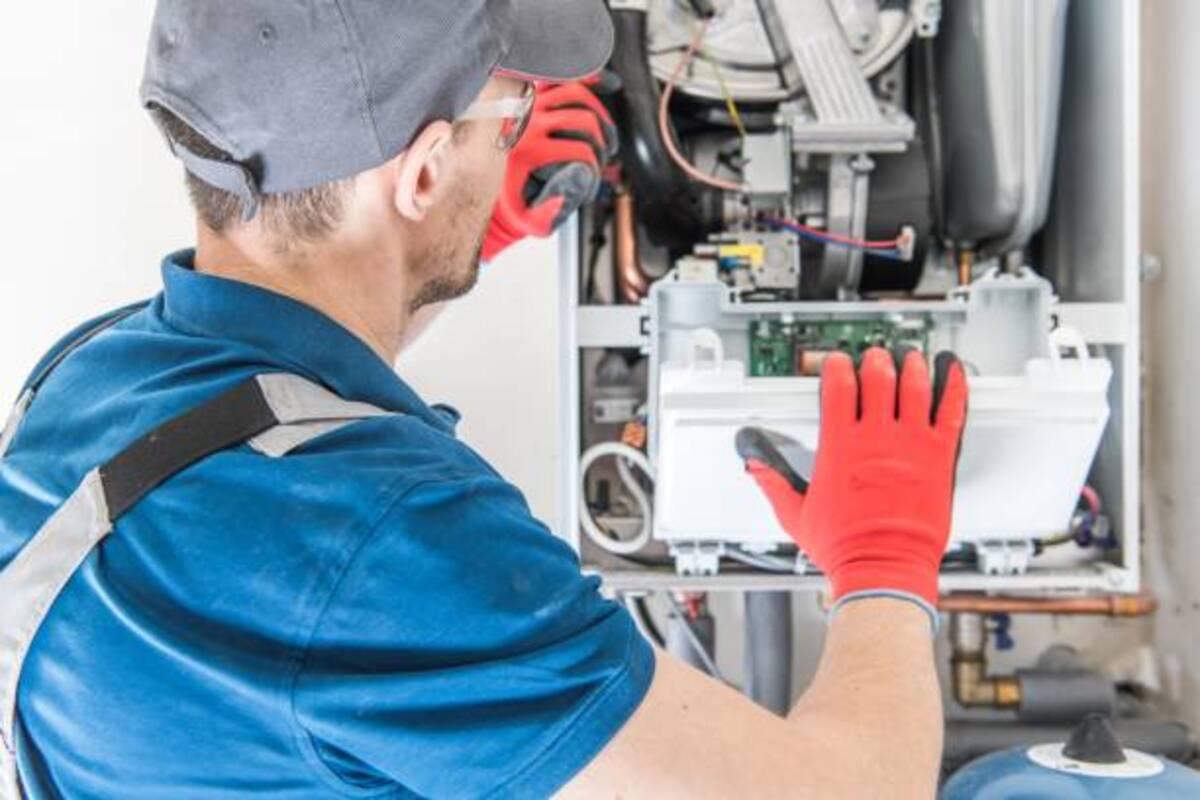How you can Handle Furnace Repair on Your Own

When winter sets in and temperatures drop, your furnace becomes an essential component of your home’s comfort system. However, like any mechanical device, furnaces can encounter issues that require repair. While some problems may necessitate professional help, many common furnace repairs can be tackled by homeowners. In this guide, we’ll provide a comprehensive, step-by-step approach to furnace repair that can help you troubleshoot and fix your furnace on your own.
Understanding Your Furnace
Before diving into furnace repair services, it’s crucial to understand how your furnace operates. A furnace works by drawing in air, heating it, and then distributing the warm air throughout your home. Key components include the thermostat, gas valve, burners, heat exchanger, blower, and various safety switches. Familiarizing yourself with these parts can make troubleshooting and repairs more straightforward.
Safety First: Precautions to Take
Safety is paramount when working with your furnace. Always turn off the power to your furnace at the circuit breaker and shut off the gas supply before beginning any repairs. Ensure that your workspace is well-ventilated and that you have a fire extinguisher on hand. Wear protective gear, including gloves and safety goggles, to prevent injury.
Common Furnace Problems and Solutions
Thermostat Issues
A malfunctioning thermostat can lead to a variety of furnace problems. If your furnace isn’t producing heat, start by checking the thermostat settings. Ensure it’s set to “heat” and that the temperature is set higher than the current room temperature. If the thermostat is battery-operated, replace the batteries. Clean the thermostat’s contacts and ensure it’s not in direct sunlight or near other heat sources, which can affect its readings.
Furnace Doesn’t Turn On
If your furnace won’t turn on, check the power source. Ensure that the furnace is plugged in and that the circuit breaker hasn’t tripped. Inspect the fuse box for blown fuses and replace them if necessary. Sometimes, a simple reset of the furnace can resolve the issue. Locate the reset button on your furnace, typically found near the blower motor, and press it.
Pilot Light or Ignition Problems
For furnaces with a pilot light, ensure that it is lit. If the pilot light is out, relight it following the manufacturer’s instructions. If the pilot light won’t stay lit, the thermocouple may need replacement. For newer furnaces with electronic ignition, ensure the ignition system is working properly. If the igniter is dirty or faulty, clean or replace it as needed.
Dirty or Clogged Filters
Dirty filters can restrict airflow and cause your furnace to overheat or shut down. Check the furnace filter monthly and replace it if it’s dirty. Use the correct filter size and type recommended by the manufacturer. Regular filter maintenance can improve your furnace’s efficiency and longevity.
Blower Motor Issues
The blower motor is responsible for circulating air through your home’s ductwork. If the blower motor is running constantly or not at all, it may need lubrication or replacement. Start by inspecting the blower belt for wear and tear and replace it if necessary. If the motor is making unusual noises, it might be time for a professional to inspect and possibly replace it.
Noisy Furnace
Unusual noises from your furnace can indicate various problems. Rattling sounds may suggest loose panels or screws, which can be tightened. Squealing noises often point to a worn-out blower belt, which should be replaced. Banging sounds can be caused by delayed ignition, which may require professional attention to adjust the burners or clean the ignition system.
Furnace Cycles On and Off Frequently
Short cycling can be caused by several issues, including an oversized furnace, dirty filters, or thermostat problems. Ensure the thermostat is located correctly and not influenced by external temperature changes. Clean or replace the air filter and check the blower motor for issues. If the problem persists, a professional may need to adjust the furnace’s settings.
Performing Regular Maintenance
Regular maintenance can prevent many furnace problems and extend the life of your unit. Schedule annual inspections and tune-ups with a professional to ensure all components are in good working order. Between professional visits, perform the following tasks:
- Replace or clean filters monthly
- Inspect and clean the blower assembly
- Check and clean the pilot light and burners
- Ensure the flue is clear of obstructions
- Lubricate moving parts as needed
When to Call a Professional
While many furnace repairs can be handled by homeowners, some situations require professional expertise. If you encounter any of the following issues, it’s best to call a licensed HVAC technician:
- Persistent problems after performing basic troubleshooting
- Gas leaks or a smell of gas
- Carbon monoxide detector alarms
- Complex electrical issues
- Major component failures, such as the heat exchanger
Conclusion
Handling furnace repair on your own can be a cost-effective and empowering experience. By understanding your furnace, taking necessary safety precautions, and addressing common issues, you can keep your home warm and comfortable throughout the winter months. However, always recognize your limits and know when to call a professional to ensure the safety and efficiency of your furnace.







